
The waters of the North Sea have always been a focus for activity. Today, cruise ships, merchant vessels and oil infrastructure all use the waters that were so important to the traders and travellers of the past.
Recently, I crossed the high seas for the coast of Norway. I was quite excited because I would be duplicating the sea crossing that was so important to the Norse inhabitants of Orkney. I’ve flown to Bergen many times and it is a city that I love. But air travel makes me a child of my times.
We forget how much our perception of the world is influenced by our mode of transport. The ease of flight is a good example. Distances are shortened, risk is reduced, comfort is increased. But we also need to take into account the way in which planes allow us to see the world from above. That is not how the world was experienced in the past. Though some, with good imaginations, no doubt thought themselves into the perspective of birds, most travellers watched ahead for the signs that land was approaching – coastal species of birds, particular cloud formations, the patterning of currents and waves in the water. They could then take stock as distant shapes on the horizon grew to become mountains, hills, and forests. The envisioning of land was shaped by the way in which it appeared on the horizon in front of you and, of course, the watercraft of the past sat considerably lower in the water than those of today.
Ok, I know that I’m not going to be there at the prow, seeking the changes that indicate land ahead. And I know that I’m on a much bigger ship than any that our ancestors could possibly have imagined. I knew I’d be travelling in comfort compared to them. But it still seems a wonderful thing: to cross those same waters afloat.
The payoff is that I have to give a lecture or two. That is not a big problem – those who know me know that I love talking and getting into conversation about some of my favourite subjects. So I’ve been researching some of the people and the journeys that took place across these waters a thousand years ago. My main source is the Orkneyinga Saga, that wonderful account, drawn together from the stories that were told about the inhabitants of the northern world around Orkney a thousand years ago. While some of the Saga is a fairly dry recitation of ‘fact’ – who did what to who and why and when, most of it is much more colourful and quite often it is presented in words that purport to be the characters’ own. We are told of lives and loves, we learn of teenage boys and their liking for bars and chic clothing, we learn of resourceful women, we learn of boastful men, and we learn of the arrogance and jealousies that fuelled the powerful families of the day. Perhaps it was not so different to the present.
One of my favourite characters is Rognvald, Earl of Orkney. Though he grew up in Norway and earned a reputation as something of a teenage rebel, he ended up as a much loved and respected Earl of Orkney. He founded our cathedral, a building that still commands respect and awe. He was well educated and his poetry provides an intimate glimpse of his life and his changing concerns as he grew to maturity. He was well travelled (reaching Jerusalem) and he experienced many cultures – a reminder that the wider view is not exclusive to the present day.
Another individual who I always think of is Margaret daughter of Eric, King of Norway; she came to be known as the Maid of Norway. Though she lived in the decades after the events of the Saga were recorded and written down, her story is still vivid and it tugs at my heart strings. Margaret was born in Bergen in 1283; sadly, her mother, a Scottish princess, died in childbirth. Her grandfather, King Alexander III of Scotland died in 1286, making her queen of Scotland, and after prolonged negotiations she was betrothed to Edward, son of Edward I of England. In 1290 the seven-year-old princess set sail across the North Sea to Scotland from whence she would travel onwards to meet her future husband. The little girl did not live to see her mother’s country as the weather deteriorated and she died, probably as a result of sea-sickness somewhere short of Orkney. Her body was returned to Bergen, where it is still possible to visit her grave – a pilgrimage I always make when I am there.
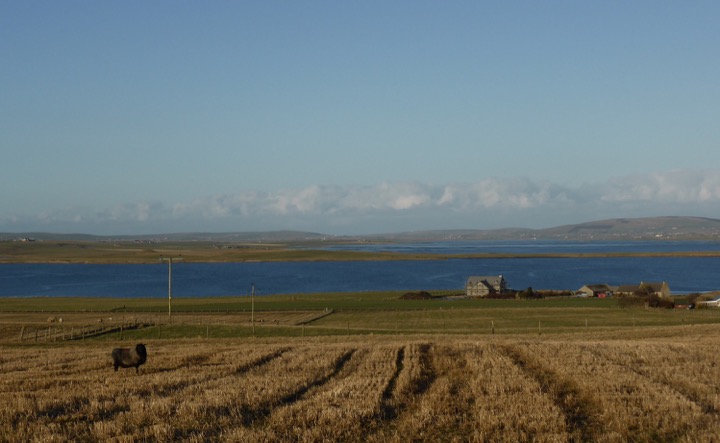
The landscape of Orkney was quite different to that experienced by those living and farming around the fjords of Hordaland and Bergen.
Well, that is a cheery tale for those contemplating a crossing of the same stretch of water. But there were, of course, many thousands of Norsemen and women who made the same crossing with no ill effects. I’ve arrived in Orkney by sea often enough, and on a variety of craft, but arriving into Bergen and the fjords to the north by sea is something different for me. Like my Norse predecessors I’m on the lookout for good tales to tell those who have kindly remained in Orkney to look after my home and belongings. Like the Norse it will, I hope, expand my views of the world.
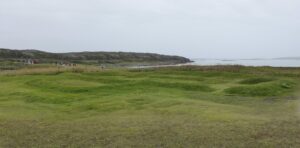
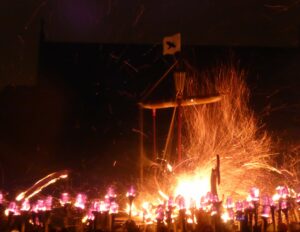
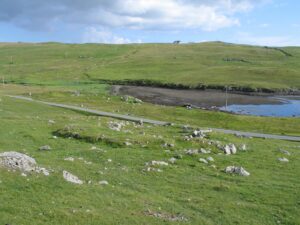


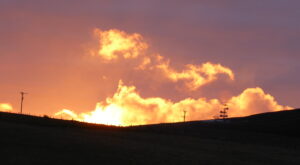
You must be logged in to post a comment.